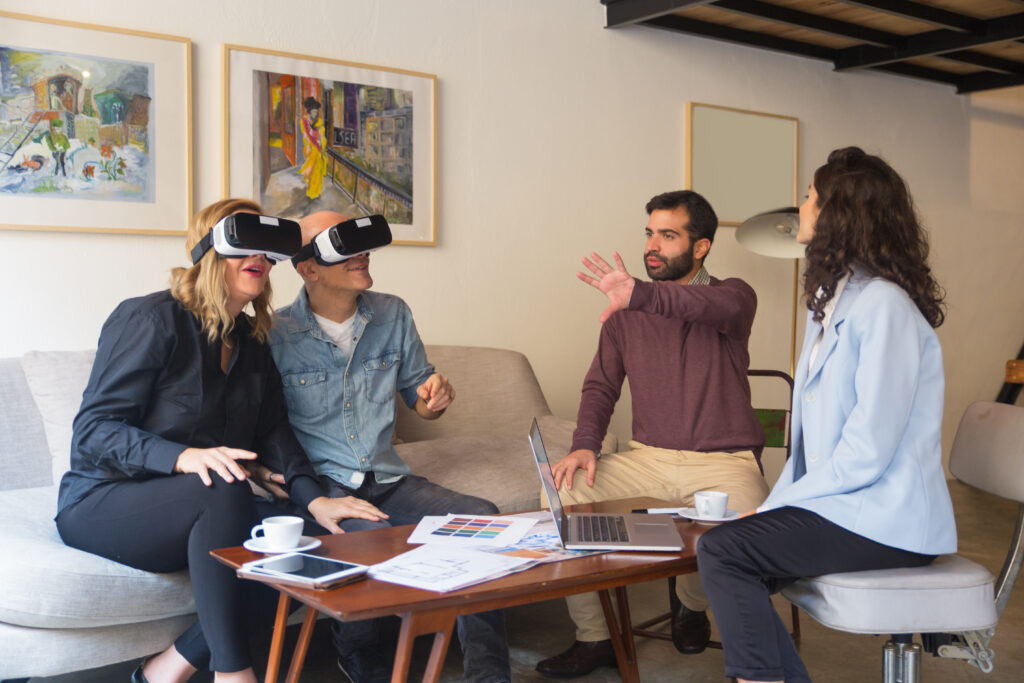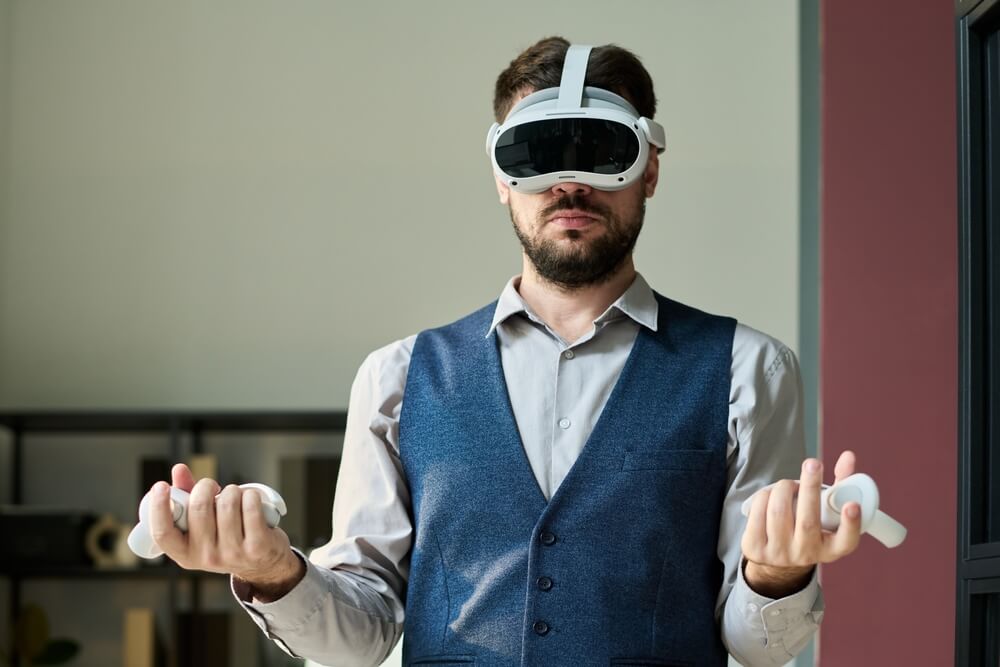Digital Employee Onboarding using VR
Table of Contents:
Efficiently managing recruitment and the entire life cycle of an employee is a challenge. However, with the help of modern technologies, such as VR, the whole process becomes much simpler and often increases employee satisfaction, reducing the stress that they often feel in the first days on the job. But how does employee onboarding in VR work? And does it actually improve the onboarding process? These and other questions are answered in this article.
What is VR?
Virtual reality is a computer-generated, three-dimensional image that can give the illusion of the real world. Using digital technology, graphic designers, animators, and developers can create objects, spaces, and events that mimic those of their real or fictional counterparts. Gamers are very familiar with this virtual world, which is as realistic as it is magical and simultaneously immersive, allowing one to sink into it completely and get away from the real world. Virtual reality, like augmented reality (AR), is most often associated with entertainment. That is what most people think. And indeed, in entertainment, VR works perfectly. However, this is not the end of the possibilities as VR also perfectly supports the HR sector – in remote working, training, and employee onboarding.
What is employee onboarding?
Onboarding is an activity which helps a newly hired person to adapt to the company and settle in quickly. Adaptation is a comprehensive concept. It includes many aspects of ordinary “life” as well as the idiosyncrasies of each company. For example, during onboarding, a new employee will learn about the organization’s strategy, culture, and mission, its vision and goals, its organizational structure and company procedures, as well as how it deals with documentation, annual leave, and overtime, among other things. Other important topics to be covered are those outlining the individual’s responsibilities and any opportunities for development.
Unlock the future with Mazer: Your innovation partner.
Why use VR when onboarding employees?
Direct contact with remote workers
During employee onboarding, VR technology helps in many aspects of adaptation. It is particularly important when a remote employee is hired. With VR, it is possible for the employee to meet with their new team as if in person without traveling.
Virtual office tours
VR technology can be used to show new employees around the company’s offices across the country. They can also be taken to the company’s factories, where physical access might usually be impossible either due to distance or for safety reasons. During digital onboarding, such activities effectively support the creation of a strong brand in modern organizations.
Initial training with VR
Digital employee onboarding can also be used to provide initial training in how to operate the company’s systems, health and safety, or more specific responsibilities to be carried out in their role. It’s worth remembering that VR allows you to learn through experience, and in this way, you can assimilate 75% more knowledge and skills during training. Creating the conditions of the target workplace will even enable you to learn very complex tasks in a safe, controlled environment. Wearing VR goggles and headphones allows you to completely disconnect from the surrounding reality and any distractions that might be present in the space around you, such as phones, conversations, and noise outside the window. By moving into the virtual world, we can absorb what we see in the “parallel dimension” of VR.
Why use digital employee onboarding?
These days, finding a talented employee can be difficult. However, research conducted by NextWave Hire clearly shows that having a strong brand attracts 50% more qualified candidates. Interestingly, this rate is even higher in competitive sectors that require niche skills for new hires.
A strong brand also reduces the time it takes to find suitable candidates, positively impacting finances. As a result, the budget needed to hire recruiters and promote vacancies is minimized.
By using virtual reality onboarding in the recruitment process, you can let new employees see for themselves what their new workplace looks like and the culture of your company while also introducing them to the team, even when the offices are in several different locations. This encourages positive relationships to be built between staff and increases the chances of long-term cooperation.
Employee onboarding using VR – a must-have in HR
So, as you can see from the above examples, the possibilities of using virtual reality in employee onboarding processes are almost limitless and depend on one thing – the imagination of company management in how to employ this technology for the development of the organization. In innovative companies already successfully using VR support, one does not think of this technology in terms of testing new capabilities but rather in the context of using cutting-edge solutions to increase market competitiveness and attract well-qualified employees. Companies such as XR Wizards are already creating solutions for digital employee onboarding, with their Mazer platform.
Read also: Sales Training In Virtual Reality
How is VR relevant for employee onboarding?
VR is relevant to employee onboarding as it allows for remote employees to have direct interactions, virtual office tours, and initial training in a controlled and immersive environment.
How does VR technology benefit remote employee onboarding?
VR facilitates direct contact with remote employees, enabling them to virtually meet their new team without travel. It also offers virtual office tours and training in a realistic and immersive environment, enhancing the onboarding experience.
What are the advantages of digital employee onboarding?
Digital employee onboarding, including VR, helps companies build a strong brand, attracting more qualified candidates and reducing the time and costs associated with hiring. It fosters positive relationships among employees and increases the chances of long-term cooperation.
Why can VR-based employee onboarding be considered a valuable asset in HR?
VR-based employee onboarding offers limitless possibilities for improving the onboarding process, enhancing market competitiveness, and attracting well-qualified employees.
Unlock the future with Mazer: Your innovation partner.

Author: Rafał Siejca
Rafal has over twenty years of corporate experience, including roles at Millennium Bank, Comarch, and leading software teams at PZU, one of Europe’s largest insurance companies. As one of Poland’s few true VR experts with a decade of experience, he ensures timely, high-quality project delivery as CEO and CTO.










